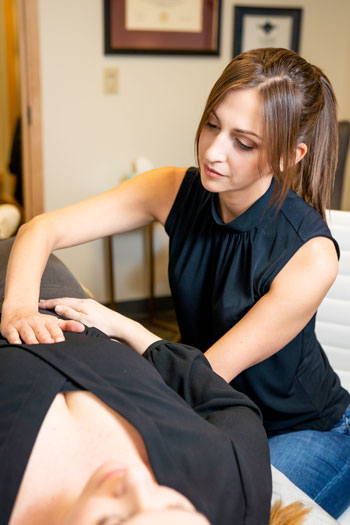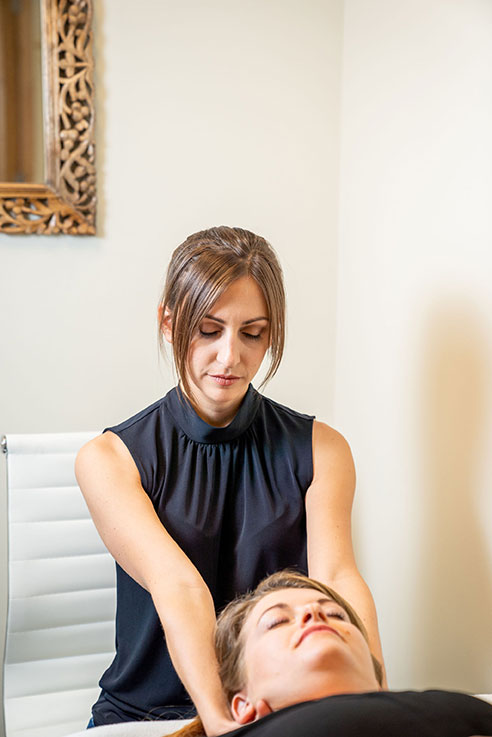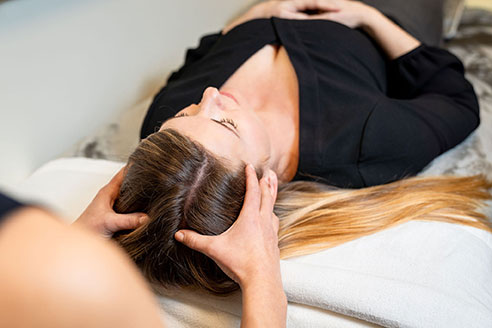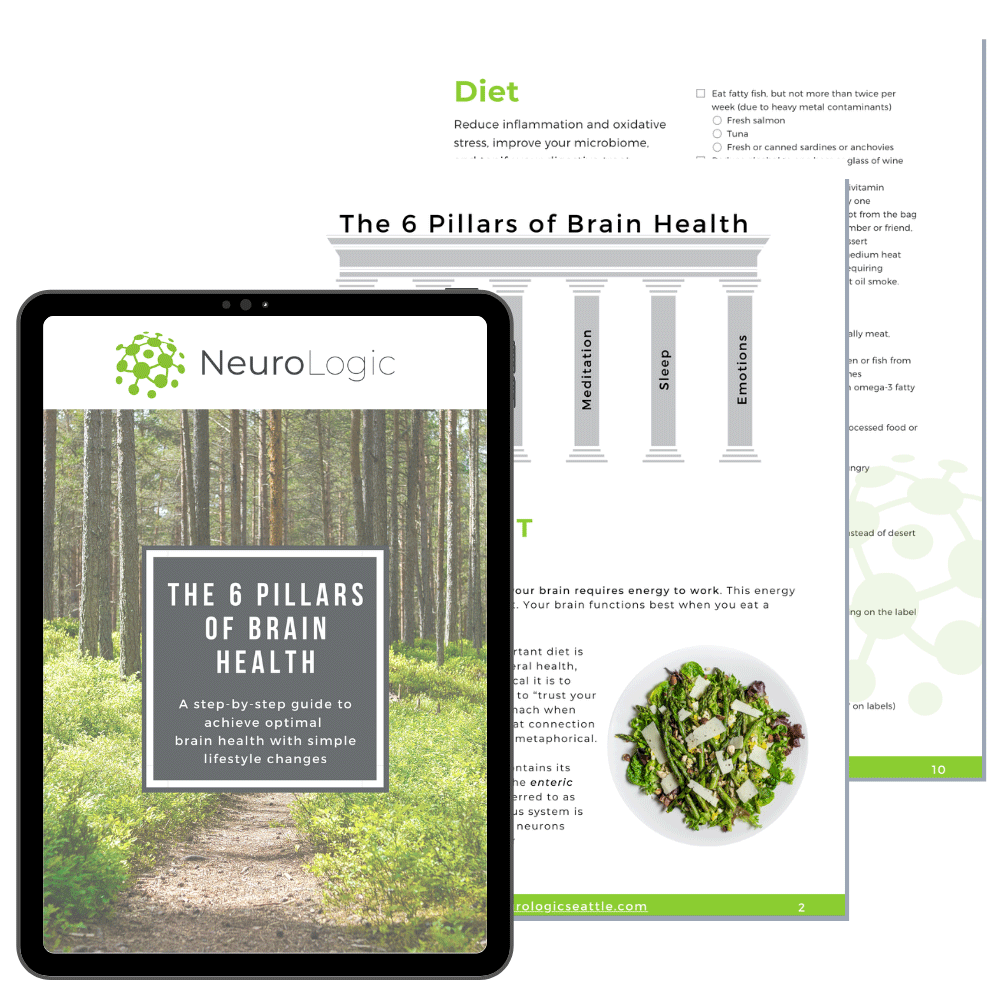Craniosacral Therapy
What Is Craniosacral Therapy (CST)?
Craniosacral therapy is a gentle, hands-on treatment focused on freeing restrictions found in and around the body’s nervous system.
Through the gentle manipulation of the bones in the skull, spine, and pelvis, the flow of cerebrospinal fluid throughout the nervous system can be optimized. As the blockages are removed, normal flow is restored, enhancing the body’s ability to heal.
The entire body is covered with a network of connective tissue called fascia. The fascia covers and connects organs, glands, blood vessels, nerves, muscles, and even the brain and spinal cord. The principle behind craniosacral therapy is that all parts of the body are interrelated at every level. Since all parts are connected, blocks or restrictions in one part can influence the function of other parts.
Using light touch, craniosacral therapists follow the subtle movements of your fascia. Then using gentle pressure (less than the weight of a nickel), they release areas of restriction. This relieves tension in the fascia, cranial bones, and fluids around the body’s nervous system.
Through this release, craniosacral therapy promotes reduced pain, a sense of well-being, and overall health and healing. As the entire body is heavily influenced by the nervous system, this therapy can help to alleviate many conditions.
What Conditions May Craniosacral Therapy (CST) Help?
According to the Cleveland Clinic, craniosacral therapy may be helpful in the following conditions:
- Chronic pain
- Fibromyalgia
- Migraine headache
- Complex regional pain syndrome
- Fascial adhesions
- Multiple sclerosis
- Neuralgia
- Neurodegenerative diseases
- Temporo-mandibular joint (TMJ) syndrome
- Stroke
- Post-concussion syndrome
- Speech impairment
- Epilepsy

Because there are no known side effects to craniosacral therapy, many people prefer this therapy to prescription medications that have more potential risks.
People with physical pain, a history of head injury, or with trauma held in the body respond very well to craniosacral therapy. Other good candidates for craniosacral therapy are those wanting an introduction to safe touch or somatic experiencing (SE).
Reach out for a free consultation and learn if you may be a good candidate for craniosacral therapy.
Packages
Starter Pack
-
● 5 Craniosacral treatment sessions (30 minutes each)
Basic Pack
-
● 10 Craniosacral treatment sessions (30 minutes each)
Complete Pack
-
● 15 Craniosacral treatment sessions (30 minutes each)
*Not covered by insurance, but most can use their HSA or FSA.



What Will I Notice During Craniosacral Therapy?
A craniosacral therapy session is similar to massage therapy. One major difference is that, in craniosacral therapy, the patient remains fully clothed.
The response to craniosacral therapy is very individual, but you may experience any of the following sensations during your session:
- A sense of deep relaxation
- Sleepiness
- Feeling hot or cold sensations
- Feeling tingling or numbing sensations
- Feeling pulsations
These feelings sometimes move throughout your body during the session, as the treatment gently removes blockages in your nervous system.
Some people leave their session feeling so relaxed they need to take a nap. Others feel energized and focused. These effects may come on quickly or may gradually develop over a few days following treatment.
“Our work has been so meaningful. It’s the most valuable and tangible healing work I have ever done. Thank you for helping me get my life, spirit, and personality back!”
Frequently Asked Questions
Yes, it’s a very safe, gentle therapy and works well for children.
If you have any of the following conditions, you’ll need to be cleared first by your regular doctor to receive craniosacral therapy:\
- Aneurysm
- Recent traumatic brain injury
- Severe bleeding disorder
No, craniosacral therapy is not recognized by insurance companies as a medically necessary treatment. If interested in this service, we provide discounted cash packages.
Each session is 30 minutes long. Many people receive benefits from 3-10 sessions. Some choose to receive CST on a weekly or biweekly basis as part of their nurturing self-care regimen. We’ll work with you to develop a plan that’s right for you.
In short, no. Any benefits observed are the result of your nervous system healing – and healing doesn’t spontaneously disappear. However, the results seen from craniosacral therapy are highly individual. This type of therapy works by promoting healing at a deep level. But sometimes there is more work to be done to adequately produce lasting change.
If craniosacral therapy doesn’t produce the desired symptom improvement, we generally suggest neurofeedback as a next step for more lasting change.
There is a great deal of anecdotal evidence on the benefits of craniosacral therapy. While clinical research on craniosacral therapy is more limited, several studies have supported its effectiveness.
One study indicated that craniosacral therapy is an effective treatment for chronic neck pain. Another study found that it was effective at reducing symptoms in those with severe migraine headaches.³ Craniosacral therapy was also shown to be effective at relieving pain and anxiety in individuals with fibromyalgia.

